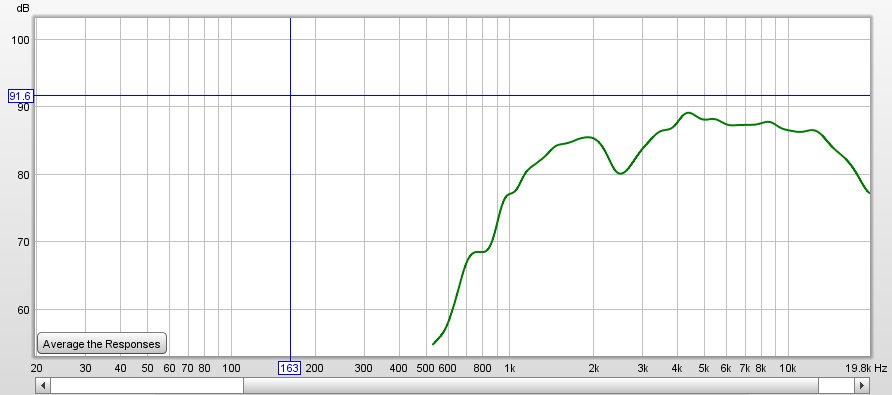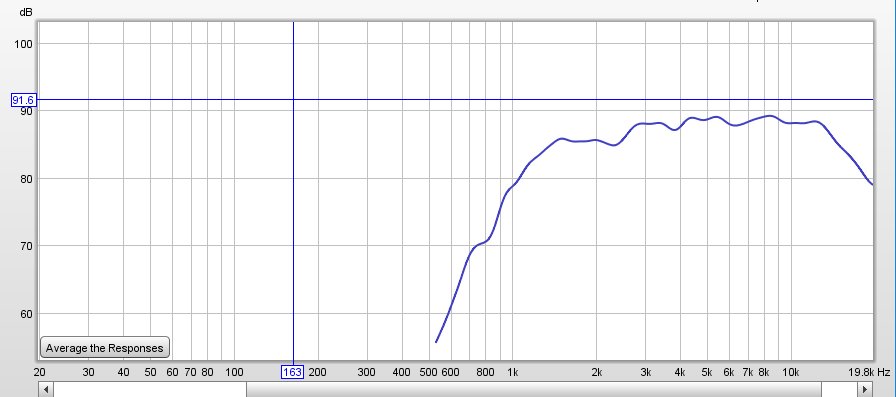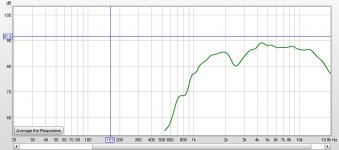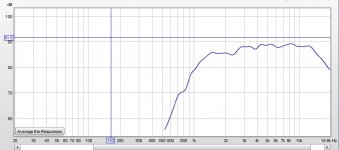and Edge tells that too by the way.
But you can't see power or any other average from The Edge. Some part can equalized but Edge can't tell that either by the way.
So whats the point in moving the microphone around in edge if its not telling you what the off axis response looks like?
If the sound travels along the surface of the baffle like a pressure wave, I would think something like thick carpet or fur would prevent much of it from interacting with the baffle edges, but maybe not the lower frequencies (1-2 khz) as much. I don't see why felt would be better than a very irregular surface like fur.
IME covering the baffle in fleece like material has its biggest improvement in imaging. Diffraction doesn't only affect frequency response.
Narrow baffles and rounded shapes tend to cause more sound to interact with the room which means they need more space around them. In a crowded room a sound absorbent baffle makes more sense.
nuLOOM Hand-woven Flokati Wool Shag Rug (2' x 3&apos😉 - 2' x 3' | eBay
The other major benefit is that you don't have to bother with countersinking which means you don't need a router.
IME covering the baffle in fleece like material has its biggest improvement in imaging. Diffraction doesn't only affect frequency response.
Narrow baffles and rounded shapes tend to cause more sound to interact with the room which means they need more space around them. In a crowded room a sound absorbent baffle makes more sense.
nuLOOM Hand-woven Flokati Wool Shag Rug (2' x 3&apos😉 - 2' x 3' | eBay
The other major benefit is that you don't have to bother with countersinking which means you don't need a router.
Last edited:
Sound is not well absorbed at a grazing incidence, that's what limits baffle absorber materials. Even the sound baffles in an anechoic chamber have almost no absorption at a grazing incidence. In theory it goes to zero, but in reality there is always a little absorption.
Spreading an amount of sound around into twice the volume reduces a specific path of reflection to -6dB. When you think about it, there is the potential to turn a hard reflection into a virtual noise floor in space, time and at less than a certain level.. ideally making entropy of it....rounded shapes tend to cause more sound to interact with the room
..hmm, maybe flocking (..yes that's flOck 😱 ) some 20 ppi foam?
Yes, well time to meet the flockers. 🙂 I have some synthetic fur I want to try next, but I would put rockwool on the baffle if I thought it would make it sound like a sphere.
Sound is not well absorbed at a grazing incidence, that's what limits baffle absorber materials. Even the sound baffles in an anechoic chamber have almost no absorption at a grazing incidence. In theory it goes to zero, but in reality there is always a little absorption.
I get what you're saying, but I don't see how on a large baffle the sound can avoid passing through the material unless the material actually reflects the sound. Its the same as lining a waveguide with wool. The sound wants to radiate evenly outward but bumps into the baffle.
My own experience is that there is an improvement in imaging. I think that this might be more than just a better frequency response. It might have to do with cutting down on early reflections which as you well know are problematic. The material can also be wrapped around a corner as well.
Spreading an amount of sound around into twice the volume reduces a specific path of reflection to -6dB. When you think about it, there is the potential to turn a hard reflection into a virtual noise floor in space, time and at less than a certain level.. ideally making entropy of it..
I personally like high dispersion speakers, my first build was an array type speaker with wide horizontal dispersion. But you really need space around such a speaker or it sounds "disjointed" and weird. I think that this is the effects of early reflections, which kill imaging.
In a tight space the only options are waveguides/horns or large baffles, which prevent higher frequencies from diffracting. If you're going the large baffle route than I don't see a reason not to cover the baffle in fur or wool.
Monkey coffin speakers are really what's needed if you're going to put a speaker next to a dresser or tv etc.
Last edited:
You may have missed my point, which was not to disperse the sound in general, just the portion subject to diffraction. I was implying that the majority of the sound was already being purposefully directed in some way.
Why are you considering the fur.. is making the baffle go away going to rid you of diffraction? If you can get a hemispherical wavefront running cleanly along the baffle, wouldn't there be benefits in leaving it along that run?
Why are you considering the fur.. is making the baffle go away going to rid you of diffraction? If you can get a hemispherical wavefront running cleanly along the baffle, wouldn't there be benefits in leaving it along that run?
You may have missed my point, which was not to disperse the sound in general, just the portion subject to diffraction. I was implying that the majority of the sound was already being purposefully directed in some way.
Why are you considering the fur.. is making the baffle go away going to rid you of diffraction? If you can get a hemispherical wavefront running cleanly along the baffle, wouldn't there be benefits in leaving it along that run?
A round over doesn't reduce the amount of sound, it just redirects it with less baffle diffraction. So if there are nearby objects it wouldn't be as good as sound absorption.
There are other reasons for using large baffles though. If there is plenty of space around the speaker then a sound absorbing baffle doesn't make as much sense.
A lot people buy skinny sleek speakers and then wonder why they don't sound good because the tweeter is bouncing sound off nearby walls and objects.
How is a slim baffled speaker significantly more susceptible to room effects than a wide baffle?A lot people buy skinny sleek speakers and then wonder why they don't sound good because the tweeter is bouncing sound off nearby walls and objects.
The BSC frequency for a 150mm wide baffle is already about 600Hz, so almost no difference in the amount of tweeter frequencies radiated to the sides/rear of the enclosure occurs for baffles >150mm. I.e. All baffles >150mm radiate 2pi for tweeters. The frontal radiation pattern depends almost entirely on the geometry of the tweeter itself.
Increasing the width of the baffle only modestly decreases the amount of ripple in the response of the tweeter. With a 600mm wide baffle perhaps with careful placement of the tweeter you can achieve +/-1dB through all listening angles where as with a 150mm baffle you may have to deal with +/-2dB.
The overall frequency response, ignoring slight ripple, at say 45degrees is going to be near identical for both baffle widths so you aren't going to notice any significant reduction in room effects, which probably need to be reduced somewhere on the order of 10dB to give a noticeable improvement. Only way of doing that is using larger drivers or adding a horn/waveguide to the tweeter to narrow its radiation pattern.
Last edited:
IIRC the sound travels across the baffle and then generates new sounds because of the change as it goes over the edge. This affects frequency response only at certain multiples of the frequency. BUT its probably best for imaging to have as little sound as possible coming from the edge. IOW even if you were to equalize the FR the imaging would still not be as good.
Fur might actually diffuse sound, in addition to absorbing it as well.
Not sure what you mean here, a lower baffle step means more sound on average is radiated off the baffle (forward). I agree that this is more for midrange than highs.
But a tweeter placed close to an edge, crossed low, or free mounted will put out quite a bit of sound off to the sides. Its probably more the midrange that causes room problems though.
Edge software shows ripples in frequency response up high for tweeters on large baffles. There must be some high frequency sound that isn't radiated forward.
High dispersion speakers do have a more "atmospheric" sound to them as far as I can tell and need space around them.
Fur might actually diffuse sound, in addition to absorbing it as well.
How is a slim baffled speaker significantly more susceptible to room effects than a wide baffle?
The BSC frequency for a 150mm wide baffle is already about 600Hz, so almost no difference in the amount of tweeter frequencies radiated to the sides/rear of the enclosure occurs for baffles >150mm. I.e. All baffles >150mm radiate 2pi for tweeters. The frontal radiation pattern depends almost entirely on the geometry of the tweeter itself.
Increasing the width of the baffle only modestly decreases the amount of ripple in the response of the tweeter. With a 600mm wide baffle perhaps with careful placement of the tweeter you can achieve +/-1dB through all listening angles where as with a 150mm baffle you may have to deal with +/-2dB.
The overall frequency response, ignoring slight ripple, at say 45degrees is going to be near identical for both baffle widths so you aren't going to notice any significant reduction in room effects, which probably need to be reduced somewhere on the order of 10dB to give a noticeable improvement. Only way of doing that is using larger drivers or adding a horn/waveguide to the tweeter to narrow its radiation pattern.
Not sure what you mean here, a lower baffle step means more sound on average is radiated off the baffle (forward). I agree that this is more for midrange than highs.
But a tweeter placed close to an edge, crossed low, or free mounted will put out quite a bit of sound off to the sides. Its probably more the midrange that causes room problems though.
Edge software shows ripples in frequency response up high for tweeters on large baffles. There must be some high frequency sound that isn't radiated forward.
High dispersion speakers do have a more "atmospheric" sound to them as far as I can tell and need space around them.
Last edited:
For frequencies far above the baffle step frequency (all tweeter frequencies for most applications) almost total reflection occurs at all edges of the baffle. Almost nothing diffracts around the edge. If you stand behind a speaker, almost all treble you hear has been reflected off the surroundings.Edge software shows ripples in frequency response up high for tweeters on large baffles. There must be some high frequency sound that isn't radiated forward.
The reason that larger baffles have less ripple than smaller ones is that more attenuation has occurred as the sound has travelled from where the driver is located to the edges (due to 2pi radiation), therefore sound reflected from the edges is also more attenuated at the listening position, therefore the sound coming directly from the driver dominates and therefore the ripple amplitude is smaller. Ripple gets worse if you place the tweeter near the edge of a large baffle because the reflections from the near most edges now have less attenuation.
Y
I get what you're saying, but I don't see how on a large baffle the sound can avoid passing through the material unless the material actually reflects the sound. Its the same as lining a waveguide with wool. The sound wants to radiate evenly outward but bumps into the baffle.
Not quite what happens, and actually wool lining on a waveguide will also do almost nothing. The sound is actually reflected in a sense. The wave motion is always parallel to the baffle with no velocity into the baffle, so, again, in theory, there cannot be any absorption. Absorption requires velocity INTO the absorber. As I said there will be some and the thicker the greater.
From pictures I've seen, felt seems to be best at the edge of the baffle so the waves travelling close to it are absorbed at the edge, reducing the edge diffraction?
Not quite what happens, and actually wool lining on a waveguide will also do almost nothing. The sound is actually reflected in a sense. The wave motion is always parallel to the baffle with no velocity into the baffle, so, again, in theory, there cannot be any absorption. Absorption requires velocity INTO the absorber. As I said there will be some and the thicker the greater.
This guy got good frequency results with felt, but it seems as though he is putting chunks on the baffle that the sound is hitting/diffracting.
Diffraction Doesn't Have to be a Problem
I've never tried felt because it seems too uniform a surface. One possibility is that long hairs like fur are acting more as a diffuser. So the wave is broken up and doesn't make it to the edge of the baffle.
An improvement in imaging is hard to measure. I'm sure there is some improvement in FR.
I've done fur covered baffles. Other than looking wild, it didn't have a huge effect on the sound. Maybe a little smoother and more even than a bare baffle, but certainly not night and day. Felt around the tweeter had about the same effect.
Soft termination of a horn moth was noticeable both to the ear and to the microphone.
Soft termination of a horn moth was noticeable both to the ear and to the microphone.
Soft termination of a horn moth was noticeable both to the ear and to the microphone.
Not sure what that means. Did you notice imaging changes?
The speakers I have now have a fleece material on them. They image better than anything I've ever heard. Not so great without the fleece. This is just what I noticed.
Without the fleece though the baffle isn't smooth and the drivers aren't countersunk.
Because the lower and middle midrange will be near omnidirectional on a 150mm wide baffle. The speaker placement in relation to the wall behind it will dramatically affect the frequency response balance of the midrange across the 300-3000Hz range.How is a slim baffled speaker significantly more susceptible to room effects than a wide baffle?
The BSC frequency for a 150mm wide baffle is already about 600Hz
The balance between low midrange around 300Hz and upper midrange around 3000Hz is extremely critical to get vocals and imaging right. Even half a dB tilt out in this overall balance across the midrange will not sound right.
Achieving this with a narrow baffle speaker in real world rooms is nearly impossible because the speaker is affected so much by the wall behind it at the lower midrange end.
Say you have a 150mm narrow baffle and you design your BSC to give a flat on axis response in a free standing measurement. As soon as you put that speaker anywhere near the wall behind it (even half a metre or more away) it will start to boost the low midrange upto about 600Hz relative to upper midrange, making it sound wooly.
And it won't just be a smooth lift like a shelf - there will be peaks and dips caused by constructive and destructive interference from the comb filtering from the reflection off the wall.
As it gets closer to the wall the overall boost increases but the frequencies of the peaks and dips caused by comb filtering also slide up in frequency.
Changing the frequencies at which these peaks and dips occur by moving the speaker has a profound effect on the presentation and imaging of the speaker.
And unlike higher frequencies where our ears can single in on the first arrival and largely ignore the delayed reflection, low midrange is still low enough in frequency that the reflections tend to be fused together and we hear something that is closer to the "steady state" response as we do with bass, rather than the first arrival, as with high frequencies.
There is a gradual transition from perceiving the steady state response to first arrival response that takes place from about 200Hz to 600Hz, but it's not until you get over about 600Hz that the frequency response effects from a delayed reflection behind the speaker can be largely perceptually ignored.
Unless you put the speaker really far from the wall you're now forced to modify your BSC to sound right for a "nominal" distance from that wall, by lowering the rollover frequency compared to the theoretical one.
Now you're in a situation where it sounds balanced at one particular distance from the wall, but will sound thin if you pull the speaker out a bit further and wooly if you push it back further.
And, even if the frequency response is nominally balanced with the modified BSC, you still suffer from comb filtering from the wall that extends all the way up to nearly 600Hz. There's nothing much you can do about these peaks and dips and they will be audible as we are super sensitive to any response aberrations in the midrange.
Thus the speaker is very sensitive to the room effect of the wall behind it, and it's very unlikely that in a given scenario the midrange has the correct balance that the designer intended, as they are not in control of the exact speaker positioning.
Now contrast that to a wide baffle of say 500mm for a baffle step frequency of about 250Hz. Also assume that the BSC correction has been adjusted to give a flat on axis response in a freestanding measurement.
From about 300Hz up there will be very little change in the lower midrange to upper midrange balance regardless of whether the speaker is pushed closer to the wall or pulled further out. This all important lower/upper midrange balance stays pretty much constant, set by the designer in the crossover, as the speaker is baffled across that entire range.
It doesn't start to sound wooly when pushed closer to the wall, nor does it start to sound thin when pulled out from the wall. It changes very little.
Not only that, because the speaker is not radiating significantly at 180 degrees towards the wall behind it from 250Hz upwards, the comb filtering peaks/dips caused by the wall reflection will not occur. (or in practice will be greatly attenuated)
This means that you don't have a sliding comb filter effect as you pull the speaker in or out, all you really notice is the change in bass.
Of course the bass response will change when you push the speaker closer or further from the wall, but that's unavoidable and needs active correction for the specific speaker location or a technique like distributed subs.
A large baffle has other advantages too - others have mentioned that the signal travelling across the baffle will be more attenuated by the time it reaches the edge when it has further to travel. Another one is that you're buying an extra 6dB of headroom in the midrange from 250-600Hz compared to the narrow baffle example where the driver is having to work 6dB harder.
This can't be true because if both narrow and wide baffle speakers are correctly equalised with BSC to give a flat on axis free standing response, the power response of the wide baffle between 250hz and 600hz is going to be many dB less than the narrow baffle.The overall frequency response, ignoring slight ripple, at say 45degrees is going to be near identical for both baffle widths so you aren't going to notice any significant reduction in room effects,
This is going to increase the direct to reflected ratio in that midrange area by a few dB which I think is also beneficial.
Last edited:
I recently built my first speakers using some Acoustic Research cabinets that I'd got from ebay - I can't build boxes and this was my first attempt so wanted to make things a bit easier to start with, and I thought my experience might be of some use.
They didn't have tweeters with them and the woofer foam was shot, so cheap and ideal for this project. The baffle did have some felt on it that surrounded where the tweeter had been. I removed it intact. I then fitted the PHT409 tweeter (small compression driver with waveguide) and measured it. I got this:

I then attached the felt to the tweeter, and even though it wasn't the right shape or a good fit, I got this:

I then tried using some acoustic foam I had which I cut down to the same height and added it as strips above, below and to the sides of the tweeter. I did measure them as individual items to see what worked best and to see if there was a minimum amount that would work rather than the whole lot, but I don't think I saved the results. The acoustic foam worked much the same as the felt, so I bought a sheet of adhesive backed 15mm acoustic foam so I could cut it to the exact shape I needed. As the speakers would be behind a large grill it didn't matter what they looked like as they wouldn't be seen.
I just thought sharing this might be useful.
They didn't have tweeters with them and the woofer foam was shot, so cheap and ideal for this project. The baffle did have some felt on it that surrounded where the tweeter had been. I removed it intact. I then fitted the PHT409 tweeter (small compression driver with waveguide) and measured it. I got this:
I then attached the felt to the tweeter, and even though it wasn't the right shape or a good fit, I got this:
I then tried using some acoustic foam I had which I cut down to the same height and added it as strips above, below and to the sides of the tweeter. I did measure them as individual items to see what worked best and to see if there was a minimum amount that would work rather than the whole lot, but I don't think I saved the results. The acoustic foam worked much the same as the felt, so I bought a sheet of adhesive backed 15mm acoustic foam so I could cut it to the exact shape I needed. As the speakers would be behind a large grill it didn't matter what they looked like as they wouldn't be seen.
I just thought sharing this might be useful.
Attachments
Thus the speaker is very sensitive to the room effect of the wall behind it, and it's very unlikely that in a given scenario the midrange has the correct balance that the designer intended, as they are not in control of the exact speaker positioning.
I designed my speakers to have high directivity to avoid early reflections and an absolute minimum of nearby diffraction from the cabinet or nearby objects. And still, the more damping I added to the wall behind the speakers the better the imaging became. I now have about a foot of foam absorption on that wall (and almost none anywhere else.) One can do only so much with the speakers themselves, you must consider how the room interfaces with them as well.
- Home
- Loudspeakers
- Multi-Way
- Baffle Diffraction

